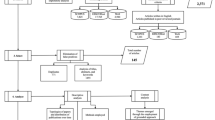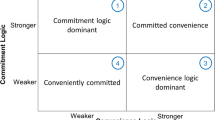Abstract
For this study, data from the annual reports of the STIM (the Swedish Performing Right Society) (By Swedes it is read as a word: ‘stim’ and not as four separate initials S.T.I.M.) were collected and analysed. If the general hypothesis that a digital technology shift has resulted in illegal downloading holds true, there should be a decrease in total revenues for composers from record sales. This is what the STIM data show. There has, however, been a simultaneous growth in income from other sources, which compensates for the loss from record royalties. This study also includes a unique data set from the STIM showing revenues for individual music IPR owners. The general finding is that a very small group of composers receives a very large share of the copyright revenues. Music as a ‘winner-takes-all’ arena is apparent.





Similar content being viewed by others
References
Andersen, B., & Frenz, M. (2010). Don’t blame the P2P file-sharers: The impact of free music downloads on the purchase of music CDs in Canada. Journal of Evolutionary Economics, 20, 715–740.
Frank, R. H., & Cook, P. J. (1995). The winner-take-all-society: Why the few at the top get so much more than the rest of us. Harmondsworth: Penguin Books.
Frith, S., & Marshall, L. (Eds.). (2004). Music and IPR. Edinburgh: Edinburgh University Press.
Giles, D. E. (2007). Increasing returns to information in the US popular music industry. Applied Economics Letters, 14(5), 327–331.
Krueger, A. B. (2005). The economics of real superstars: The market for rock concerts in the material world. The Journal of Labor Economics, 23(1), 1–30.
Liebowitz, S. J. (2005). Pitfalls in measuring the impact of file-sharing on the sound recording market. CESifo Economic Studies, 51(2–3), 435–473.
Liebowitz, S. J. (2008). Research note—testing file sharing’s impact on music album sales in cities. Management Science, 54(4), 852–859.
Liebowitz, S. J. (2010). The Oberholzer-Gee/Strumpf file-share instrument fails the laugh test. Working paper, University of Texas at Dallas.
Montoro-Pons, J. D., & Cuadrado-Garcia, M. (2011). Live and prerecorded popular music consumption. Journal of Cultural Economics, 35(1), 19–48.
Newman, M. (2005). Power laws, Pareto distributions and Zipf’s law. Contemporary Physics, 46(5), 323–351.
Oberholzer, F., & Strumpf, K. (2007). The effect of file sharing on record sales: An empirical analysis. Journal of Political Economy, 115(1), 1–42.
Peterson, R. A., & Kern, R. M. (1996). Changing highbrow taste: From snob to omnivore. American Sociological Review, 61(5), 900–907.
Pitt, I. (2010). Superstar effects on royalty income in a performing rights organization. Journal of Cultural Economics, 34(3), 219–236.
Rob, R., & Waldfogel, J. (2004). Piracy on the high C’s: Music downloading, sales, displacement, and social welfare in a sample of college students. Journal of Law and Economics, 49(1), 29–62.
Rosen, S. (1981). The economics of superstars. The American Economic Review, 71(5), 845–858.
Waldfogel, J. (2011). Copyright protection, technological change, and the quality of new products: Evidence from recorded music since Napster. NBER Working Paper Series, no 17503.
Walls, W. D. (2010). Superstars and heavy tails in recorded entertainment: Empirical analysis of the market for DVDs. Journal of Cultural Economics, 34(4), 261–279.
Zentner, A. (2005). File sharing and international sales of IPRed music: An empirical analysis with a panel of countries. Topics in Economic Analysis and Policy, 5(1): Article 21.
Zentner, A. (2006). Measuring the effect of music downloads on music purchases. Journal of Law and Economics, 49(1), 63–90.
Author information
Authors and Affiliations
Corresponding author
Appendix
Appendix
See Table 2.
Rights and permissions
About this article
Cite this article
Albinsson, S. Swings and roundabouts: Swedish music copyrights 1980–2009. J Cult Econ 37, 175–184 (2013). https://doi.org/10.1007/s10824-012-9176-4
Received:
Accepted:
Published:
Issue Date:
DOI: https://doi.org/10.1007/s10824-012-9176-4




